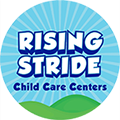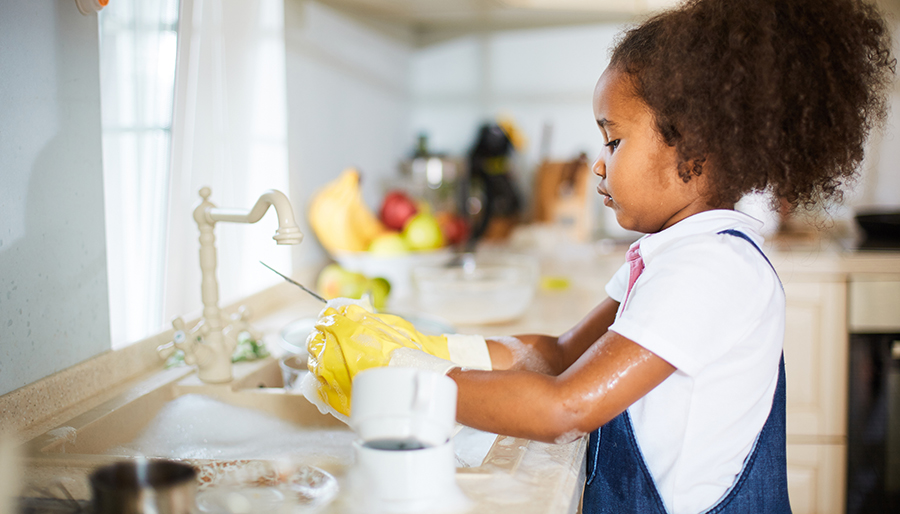The years of toddlers should be some of the most joyful years for you and your child. These children grow by leaps and bounds—walking, talking, laughing, singing, helping, and gaining new life experiences every day. Your child now has foods she loves and favorite toys; she has her own likes, dislikes, and opinions. She is naturally developing independence. Despite all this progress, this age range is sometimes called terrible because children may have some challenging behaviors.
Children from 2 to 6 years old are:
- Beginning to develop their independence and form real friendships.
- Learning rules to more difficult games.
- Developing important life skills.
Set Limits
When children do something against the rules, explain simply and in a few words:
- That what they did was wrong
- What will happen if the behavior continues Consequences need to be logical, meaningful, and simple. For example:
- If your child rides a bike without a helmet, the bike is off limits for a day or two.
- When your child won’t share a toy, that toy can’t be used for the rest of the day.
Create and Keep Routines
Teach about rules by setting up daily routines.
Children do best when they know what to expect.
In the morning:
- Use the bathroom
- Get dressed
- Have breakfast
At bedtime:
- Take a bath
- Brush teeth
- Read a story
Schedule specific times for TV, video games, and use of the computer. When you know what your child is watching, you can avoid violence and other unacceptable content. Limit “total screen time” to no more than 2 hours a day.
Read at bedtime. This helps your child:
- Settle down after a busy day
- Learn how to read
Have meals together as much as possible.
This is a great way to spend time together and share family traditions, while also teaching good eating habits and table manners.
Take Time to Talk and Listen
Children feel important when adults take the time to talk with them. Talking often, and about many things, helps them gain self-confidence. Ask about friendships and the activities that your child enjoys. Talk about your own best and worst experiences.
Ask your child:
- “What was the best part of today?”
- “What was the hardest part of today?”
Let your child know that it’s OK to have and talk about negative feelings. Share the best and hard parts of your day. This teaches your child that we all have ups and downs.
Assign Responsibility
When young children copy everyday household tasks, they are really learning how to contribute. With your support, tasks will soon be done with few reminders. As children grow older, they can begin to take on real responsibilities, such as:
- Setting the table
- Putting away their toys
- Feeding the pets
- Placing dirty clothes in a basket
Watch your child’s self-esteem grow when given the chance to help out.
Encourage Independence in Bathing and Dressing
At first, this may take a little more time than helping your child get dressed or take a bath, but
it is time well spent. Independence comes with practice, and with your guidance.
If you get the clothes ready the night before, the morning routine will involve only getting dressed. This way, your child can focus on just one thing. Your child may need to be reminded of all the steps.
- “In the morning, when you get up,
- First, use the bathroom,
- Then, take off your PJs,
- And then, put on your clothes.”
Praise your child’s efforts and successes:
“You did a great job getting yourself ready for school today!”
Below are 10 tips to help your Toddler gain Independence
1. Provide opportunities for your child to be independent.
Toddlers and twos can carry their own lunch boxes, put toys away, put their shoes by the door, and help with chores like putting clean laundry into drawers.
2. Give your child time to do simple tasks on his own.
Children at this age can do many things older children can—it just takes a little more time. When planning your family’s schedule, add extra time for things like putting on shoes, walking to the car, emptying a backpack, and feeding the dog. It’s worth it to make them feel capable and independent. Also remember to provide plenty of time to transition from one activity to another; toddlers and twos can’t immediately switch gears like adults can.
3. Offer your child choices.
Let her pick out pajamas, healthy snacks, and favorite play activities. Rather than setting up a power struggle between you and your child, empower her to make her own choices.
4. Choose your words wisely.
When giving your child a choice, ask a question: “Would you like to put your coat on in the bedroom or in the kitchen?” If something is not a choice, make a statement: “You need to put your coat on before we go outside.” Being as clear as possible about what he can and can’t decide for himself as you support your child’s growth and independence will reduce frustrations for both of you.
5. Avoid engaging in daily power struggles with toddlers.
Developing independence can mean children do or say the opposite of what an adult asks, just to show their power. If there’s a behavior that’s particularly important to you, be consistent each time a struggle begins, and make your expectations clear. If it’s a daily struggle, try one of the tips in this list to engage your child’s cooperation. For example, if you need to leave right at 7:30 a.m. and every day that’s an issue, consider providing more transition time. Or if you expect your 2year-old to help clean up toys before bed, include a choice such as whether she wants to start with the crayons or the books.
6. Engage and interact with your child.
Set him up at the kitchen counter to tear lettuce or break uncooked pasta. Give him a bowl and spoon as you make breakfast. Hop to the bedroom; sing in the car; read favorite books over and over. Share experiences and laughter together.
7. Be joyful. The experience of delight these children bring should not be overlooked.
Smile, dance, laugh, and show her you love her. Play outside in the snow. Splash each other at the pool. Have a dance party in the kitchen. Toddlers and twos are so much fun!
8. Create a routine. While you don’t need to set exact times for activities, toddlers and twos like to know what’s going to happen next.
Always read two books before bed, for example. Always wave out the window at child care drop-off. Having a predictable routine fosters children’s independence because they know what’s happening next, which helps avoid surprises, struggles, and tantrums.
9. Respect your child as a person. Tell him what’s going to happen today:
“I’m picking you up right after nap today.” Let him know what’s happening next: “After breakfast, we’ll get you dressed.” Give cues: “We’ll start putting the blocks away in a few minutes.” And give him the opportunity to do it for himself: “Do you want to put your socks on by yourself?” Respect your child as an individual.
10. Toddlers and twos are learning all the time.
They learn through their play, so be sure to give your child lots of time for both indoor and outdoor play experiences. Blocks, animal figures, dress-up clothes, cardboard boxes, bubbles, sticks, leaves, balls, and interesting kitchen utensils (pots and pans, empty spice containers)—these can all be exciting tools for learning through play.
In addition to setting up opportunities for your child to build independence, it’s important for you to let them know that you see them — their efforts, their persistence, their bravery, their growth. By offering verbal feedback, you are giving positive attention to the qualities that you want to foster in your child and making it more likely these behaviors will happen again.

